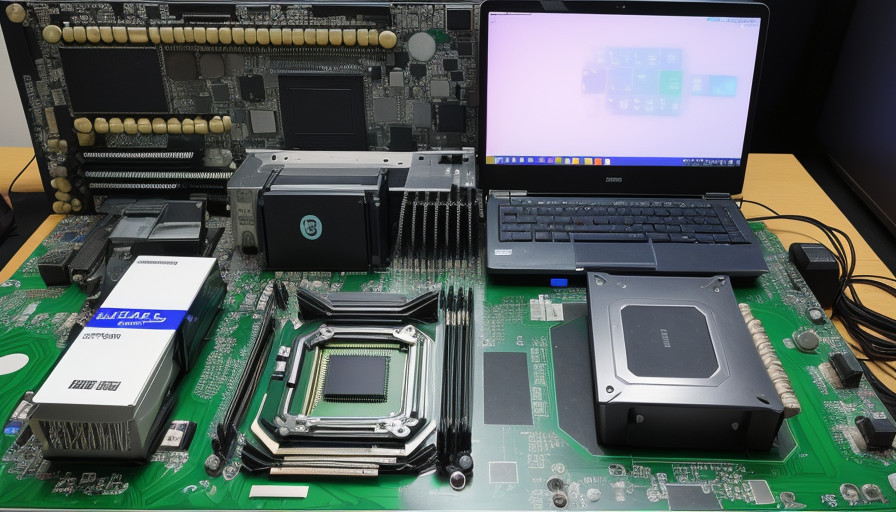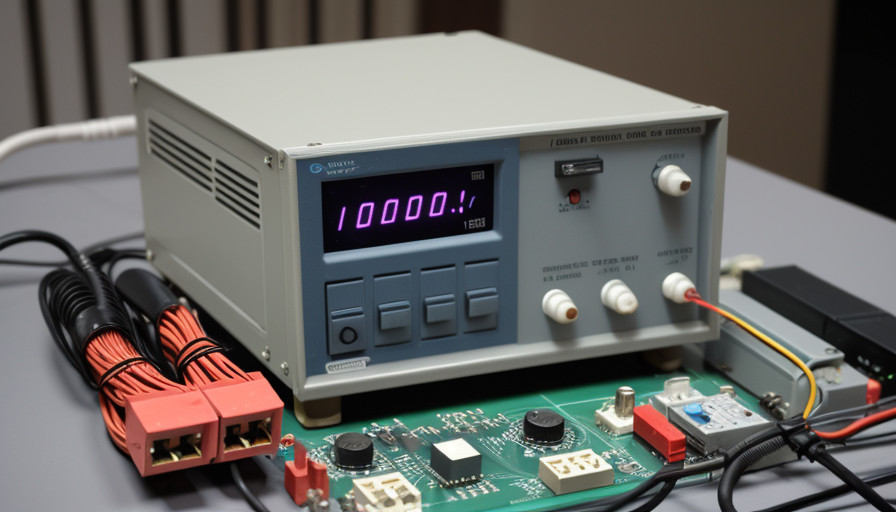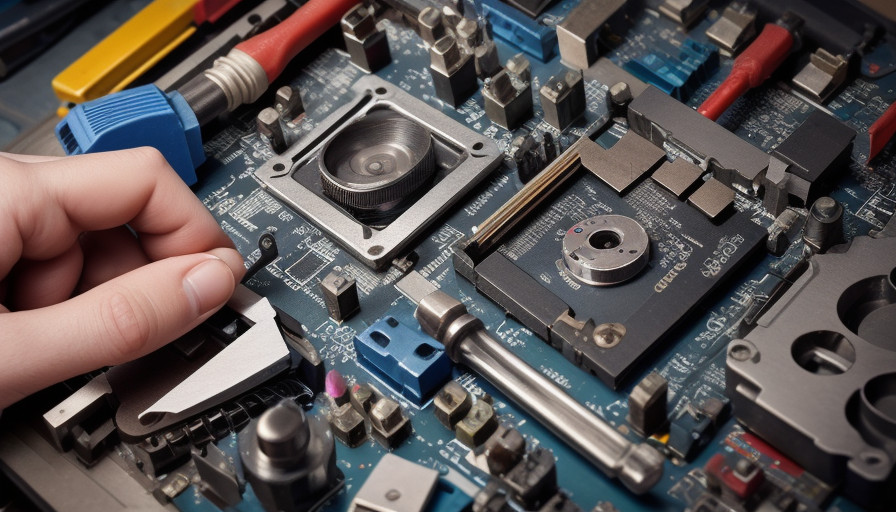Hey! I once had a motherboard turn on, but nothing else worked—no fans or lights. It was super confusing. If you’re in the same boat, don’t worry! Let’s figure out what’s wrong and get things working together.
If your motherboard turns on but nothing else happens, it could be due to loose connections or faulty components. Check cables, reseat hardware, and ensure all parts are properly connected. For more tips on fixing this issue, explore our troubleshooting guide.
In this article, we will discuss what to do when your motherboard turns on but nothing else happens. We’ll cover common troubleshooting steps to help you identify and fix the issue quickly
Common Symptoms of Motherboard Failure
When a motherboard is failing, it often gives off certain signs, even if subtle.Here are a few signs to keep an eye on:
- Powering On, But No Display: The computer’s fans might start spinning, and the lights might turn on, but the monitor remains black.
- No Beep Codes: Normally, a motherboard will emit beep codes if something is wrong. If you don’t hear any beeps, it could indicate a deeper issue.
- Unresponsive Peripherals: If your keyboard, mouse, or other peripherals don’t respond, even though the computer appears to be on, the motherboard might not be functioning correctly.
Initial Troubleshooting Steps
Before diving into more complex diagnostics, there are a few basic steps you should take:
- Check Power Supply Connections: Ensure that all power cables are securely connected to the motherboard, especially the main 24-pin connector and the 8-pin CPU connector.
- Ensure RAM Is Properly Seated: Sometimes, RAM sticks can become dislodged. Try reseating them by removing and reinserting them into the slots.
- Reset CMOS/BIOS Settings: Resetting the BIOS can sometimes clear up issues. You can do this by removing the CMOS battery for a few minutes or using the reset jumper on the motherboard.
Checking for Beep Codes
Beep codes are your motherboard’s way of telling you what’s wrong. Each sequence of beeps has a specific meaning:
- No Beeps: This might mean your motherboard is not completing its POST (Power-On Self-Test) or that there is an issue with the motherboard or speaker itself.
- Short Beeps: Typically indicates a problem with the RAM.
- Long Beeps: Often related to the CPU or graphics card.
If you’re not getting any beep codes, this could be a sign that the motherboard itself is the problem.
Testing the Power Supply
A faulty power supply can sometimes cause the motherboard to power on without fully starting up the computer. Here’s how to test it:
- Using a Multimeter: You can check the output voltages from the power supply to see if they are within the correct ranges.
- Power Supply Tester: This is a tool specifically designed to test the functionality of your power supply unit (PSU).
- Replacing the PSU: If testing reveals that the PSU is faulty, replacing it might solve the issue.
Inspecting the Motherboard for Damage
Physical damage to the motherboard can cause a range of issues. Look for:
- Burnt Components or Traces: These are often signs of a short circuit.
- Swollen Capacitors: If the capacitors on the motherboard are bulging or leaking, this indicates a failure.
- Loose or Broken Soldering: Inspect the board for any broken connections.
Testing with Minimal Hardware Configuration
To narrow down the issue, try running the computer with only the essential components:
- Remove Non-Essential Components: Disconnect everything except the CPU, one stick of RAM, and the motherboard.
- Test with One Stick of RAM: If your system has multiple RAM sticks, try booting with just one installed at a time.
- Using an External Monitor: If you suspect the issue might be with the display, try connecting your computer to a different monitor or TV.
Testing with a Different GPU
A failing GPU can sometimes cause the system to appear dead. Here’s what you can do:
- Testing with an Alternative GPU: Swap out the current graphics card with a known working one to see if that resolves the issue.
- Integrated Graphics vs. Dedicated GPU: If your CPU has integrated graphics, try removing the dedicated GPU and connecting your monitor directly to the motherboard.
Updating or Reflashing the BIOS
A corrupted BIOS can prevent the motherboard from functioning correctly. Here’s how to address it:
- BIOS Corruption Symptoms: Signs include random restarts, failure to recognize hardware, and system freezes.
- How to Safely Update or Reflash the BIOS: Follow the manufacturer’s instructions carefully, as a failed BIOS update can render your motherboard unusable.
- Risks of BIOS Updates: Always ensure the update is necessary, as it can sometimes cause more problems than it solves.
Checking for Loose or Faulty Cables
Cables play a crucial role in your PC’s functionality. Here’s how to inspect them:
- Internal and External Cables: Check both internal connections (like SATA cables) and external connections (like the power cord) for any signs of damage or loose connections.
- Replacing Faulty Cables: If you find any damaged cables, replace them with new ones to rule out connection issues.
Testing the CPU
A dead or faulty CPU can cause the motherboard to power on without proceeding further:
- Signs of a Faulty CPU: Look for no POST, no beeps, or the system shutting down shortly after powering on.
- Testing with Another CPU: If possible, try testing the motherboard with a known working CPU to see if the problem persists.
- Compatibility Issues: Ensure the CPU is compatible with the motherboard, especially after BIOS updates.
Inspecting the RAM
RAM issues can prevent your computer from starting up correctly. Here’s how to test it:
- Symptoms of RAM Failure: The system might turn on with no display, or you might experience frequent crashes.
- Testing RAM Sticks Individually: Remove all but one stick of RAM, and try booting the system. Repeat with each stick to identify any faulty ones.
- Using a Memory Diagnostic Tool: Software like MemTest86 can help identify RAM issues.
Motherboard Compatibility Issues
Sometimes the problem is not with a faulty component, but with compatibility issues:
- Ensuring All Components Are Compatible: Check that your CPU, RAM, GPU, and other components are compatible with your motherboard.
- Common Compatibility Problems: Issues can arise if, for example, your motherboard doesn’t support the speed or size of your RAM.
- How to Resolve Compatibility Issues: Updating the BIOS or replacing incompatible components can often solve the problem.
When to Replace the Motherboard
If none of the above steps work, it might be time to consider replacing the motherboard:
- Signs That the Motherboard Is Beyond Repair: If the motherboard shows physical damage or fails to function despite all efforts, replacement might be necessary.
- Cost-Benefit Analysis of Replacing the Motherboard: Consider the cost of a new motherboard versus the potential benefits, such as improved performance or newer features.
- How to Choose a New Motherboard: Ensure compatibility with your current components and consider future upgrades.
What does this red light on motherboard mean?
A red light on your motherboard usually indicates a hardware issue or error. It could mean problems with power supply, CPU, RAM, or other components. Check your motherboard manual for specific error codes, and ensure all components are properly connected and functioning.
Orange, red, and then white light on ASUS motherboard
If you’re seeing an orange, red, and then white light on your ASUS motherboard, it typically indicates a sequence of diagnostic messages.
- Orange Light: Often signals that the motherboard is in standby mode or there’s a minor issue with power or connectivity.
- Red Light: Generally points to a hardware problem, such as issues with RAM, CPU, or GPU.
- White Light: Usually indicates that the system is booting or has successfully passed initial diagnostics.
To troubleshoot, check all component connections, reseat RAM and GPU, and ensure the power supply is adequate. If the problem persists, consult your motherboard manual for specific diagnostic codes or consider seeking professional help.
Motherboard lights up but doesn’t turn on when I turn on power supply
If your motherboard lights up but doesn’t power on when you switch on the power supply, it might be due to several reasons:
- Power Supply Issues: Ensure the power supply is properly connected and working. Check the 24-pin and 8-pin connectors are securely plugged into the motherboard.
- Component Seating: Verify that all components, including RAM, CPU, and GPU, are correctly seated and connected.
- Short Circuits: Check for possible short circuits or grounding issues by inspecting the motherboard for any misplaced standoffs or metal contact.
FAQs
Can a motherboard power on without a CPU?
No, a motherboard requires a CPU to complete its Power-On Self-Test (POST). Without a CPU, the system will not boot.
How do I know if my motherboard is dead?
If your motherboard shows no signs of life, such as no beeps or lights, and you’ve ruled out other components, it may be dead.
What is the lifespan of a typical motherboard?
A typical motherboard can last anywhere from 3 to 10 years, depending on usage and environmental factors.
Should I attempt to repair a motherboard myself?
Unless you have experience with electronics, it’s usually best to leave motherboard repairs to professionals due to the complexity and risk of further damage.
How do I choose the right replacement motherboard?
Consider compatibility with your existing components, the features you need, and future-proofing for upgrades when choosing a new motherboard.
Why does my motherboard light up but nothing else works?
If your motherboard lights up but nothing else works, check these:
- Power Connections: Ensure all cables are secure.
- Component Seating: Verify RAM, CPU, and GPU are properly installed.
- Power Supply: Test if the power supply is functioning correctly.
These steps can help pinpoint the problem.
Why does my PC turn on but not anything else?
If your PC turns on but nothing else works, it’s often due to:
- Loose Connections: Check that all cables and components are securely connected.
- Faulty Hardware: Test RAM, CPU, and GPU for issues.
- Power Supply Problems: Ensure the power supply is delivering adequate power.
These checks can help you identify and fix the problem.
How do I fix my motherboard not booting?
To fix a non-booting motherboard:
- Secure Power Cables: Ensure all cables are firmly connected.
- Reseat Components: Reinstall RAM, CPU, and GPU.
- Check for Shorts: Look for grounding issues or short circuits.
These steps should help you troubleshoot the problem.
Can dead CPU cause no power to motherboard?
Yes, a dead CPU can prevent your motherboard from powering up. The CPU is crucial for initiating the boot process, so if it’s faulty, the motherboard may not start. Try testing with a known working CPU to diagnose the issue.
Can a motherboard cause a PC to not turn on?
Yes, a faulty motherboard can stop your PC from turning on. It controls power and connects all parts, so if it’s damaged, the system might not start. Check it if other fixes don’t work.
What are the symptoms of a failing motherboard?
Symptoms of a failing motherboard include:
- No Power: PC doesn’t turn on or show any lights.
- Error Beeps: Beeping sounds during startup.
- Random Crashes: Frequent system crashes or freezes.
- Hardware Issues: Devices like RAM or GPU aren’t recognized.
If you experience these, the motherboard might be failing.
Why is my PC not turning on but it has power?
If your PC has power but won’t turn on, it could be due to:
- Loose Connections: Ensure all cables and components are securely connected.
- Faulty Components: Check if RAM, CPU, or GPU are properly seated or malfunctioning.
- Motherboard Issues: There might be a problem with the motherboard itself.
Try these steps to identify and fix the issue.
Why is my computer not turning on the motherboard light?
If your computer isn’t turning on but the motherboard light is off, it could be due to:
- Power Supply Issues: Ensure the power supply is functioning and all cables are securely connected.
- Motherboard Fault: There may be a problem with the motherboard itself.
- Short Circuits: Check for short circuits or grounding issues.
Inspect these areas to help diagnose the problem.
Conclusion
Diagnosing a motherboard that powers on but does nothing else can be challenging, but by systematically working through the steps outlined above, you can often identify the root cause. Whether it’s a faulty power supply, a dead CPU, or simply loose cables, knowing what to check can save you time and money.



Leave a Reply